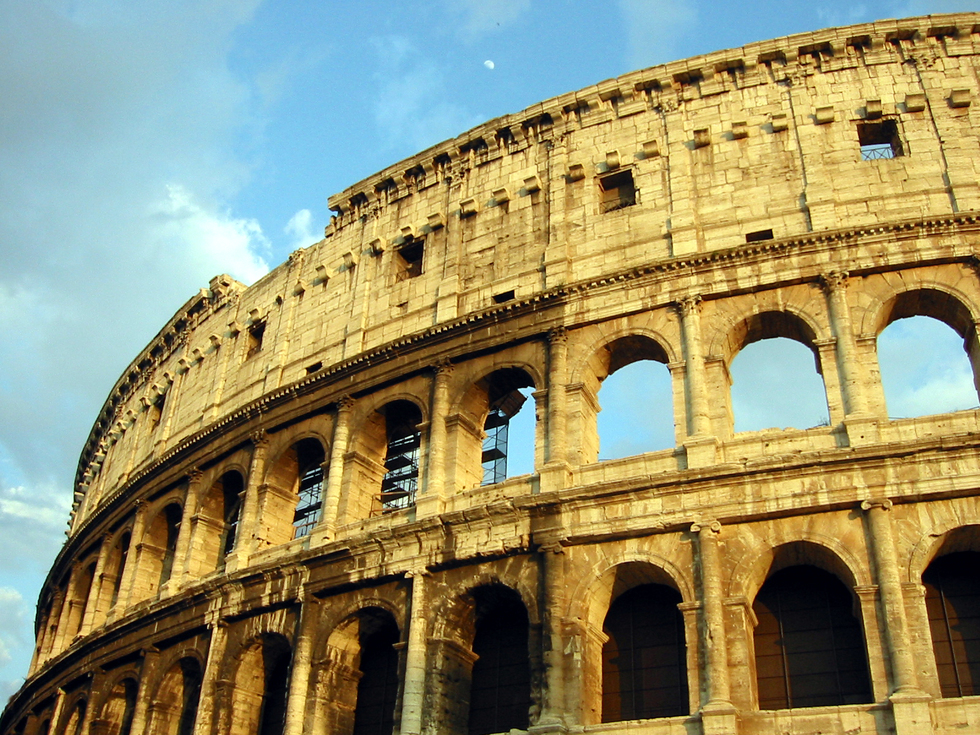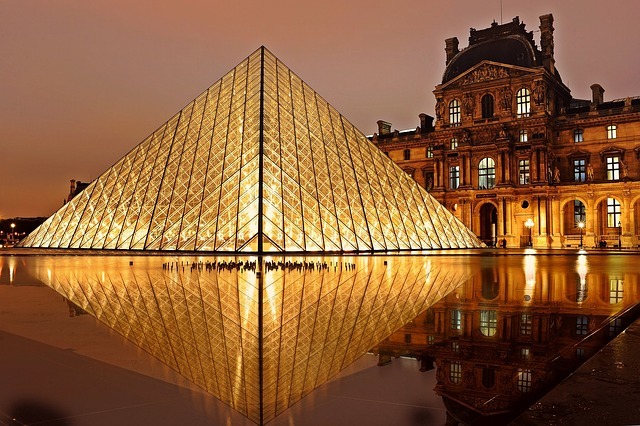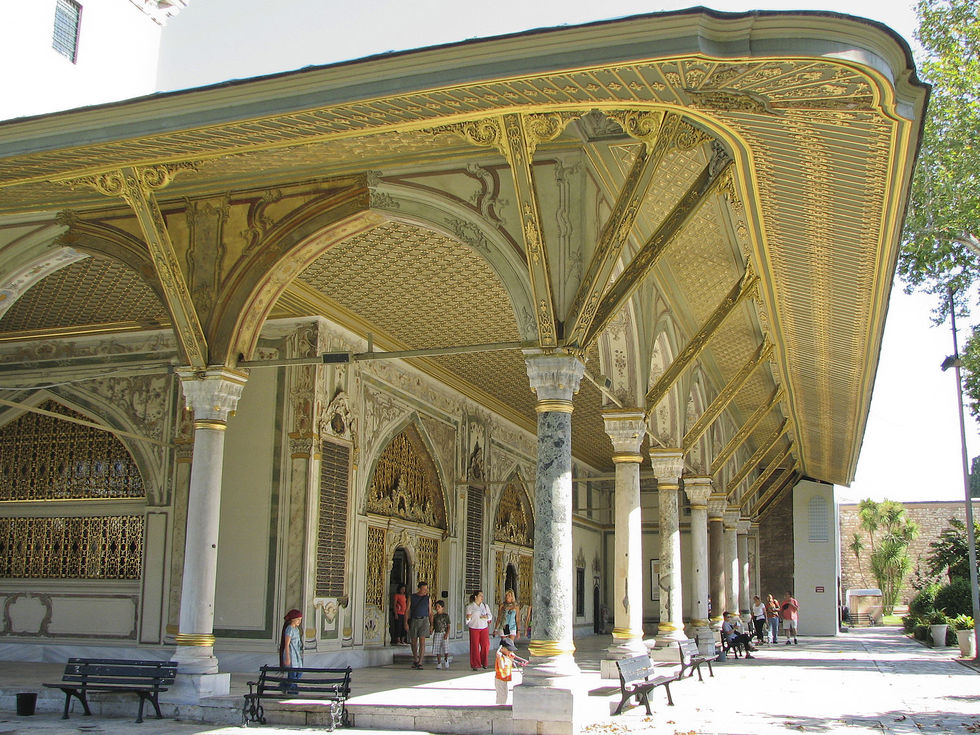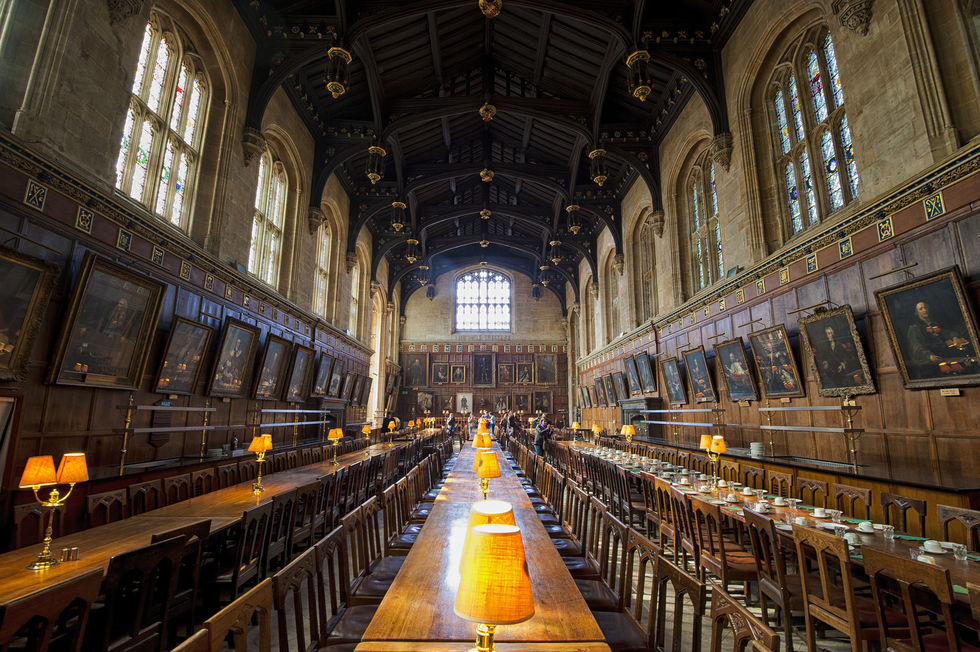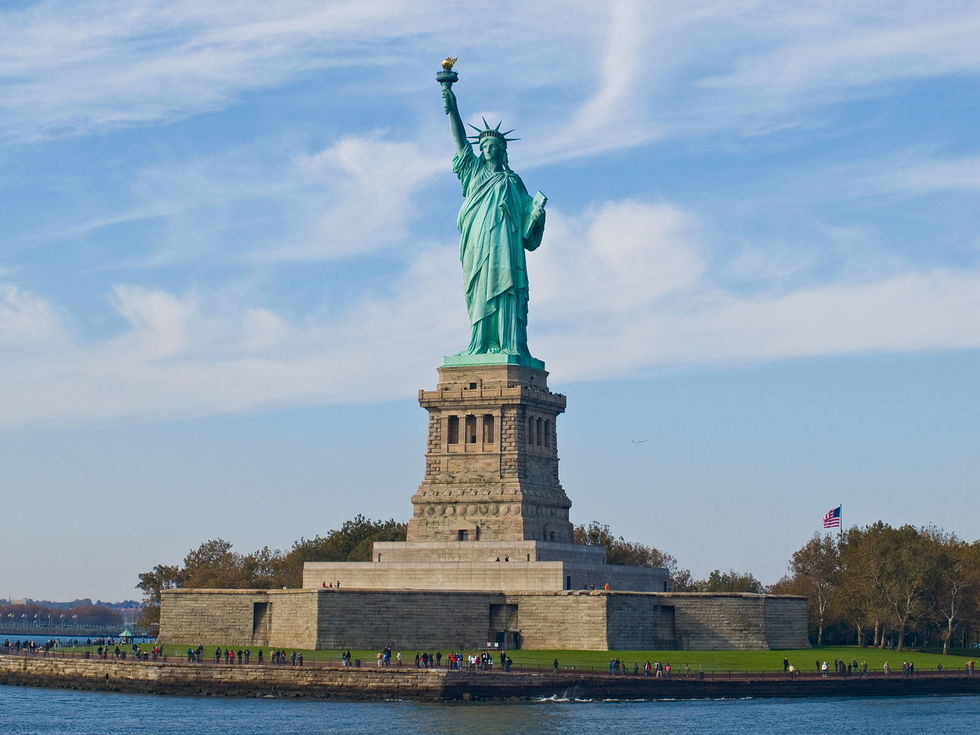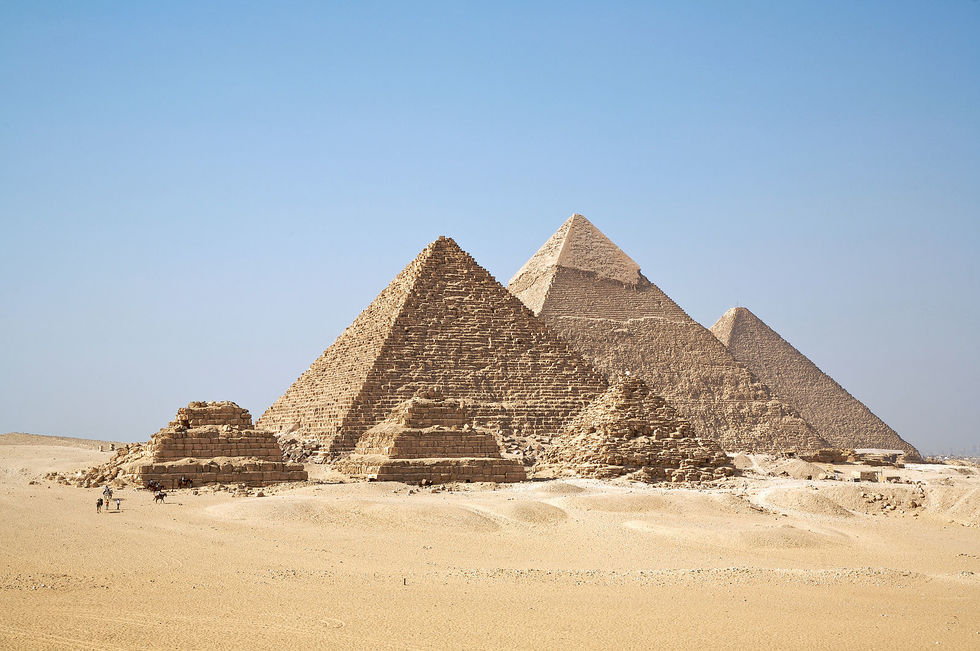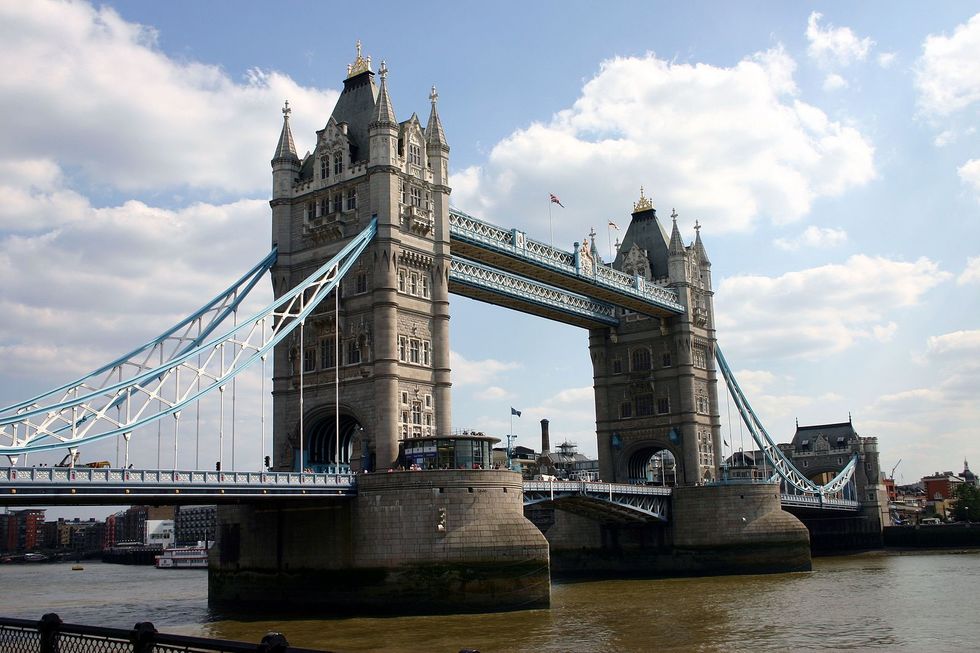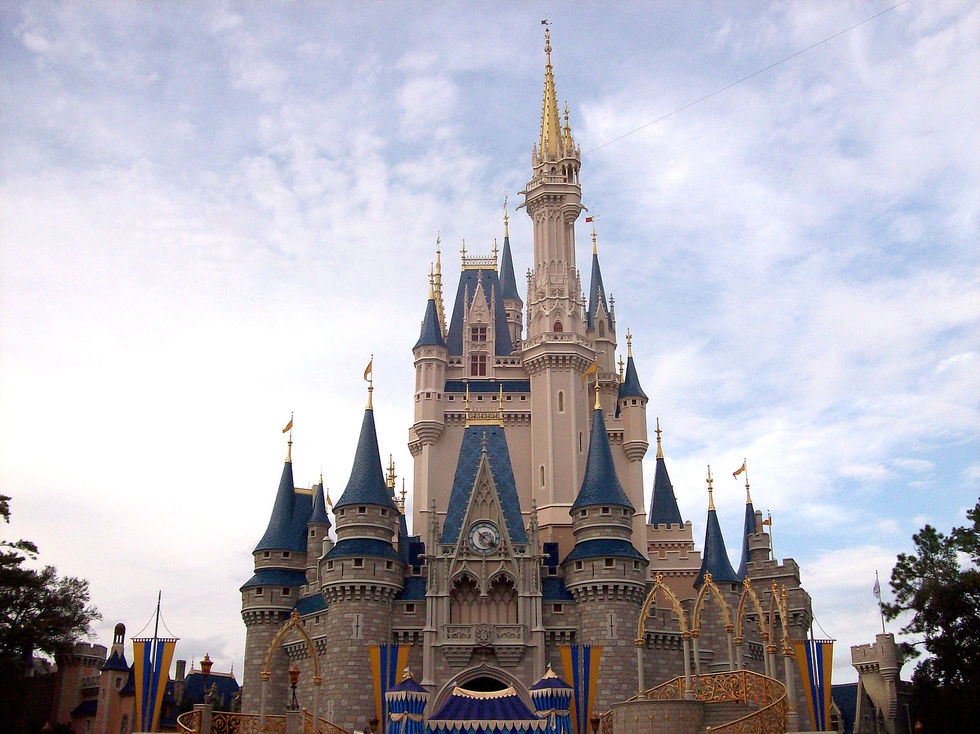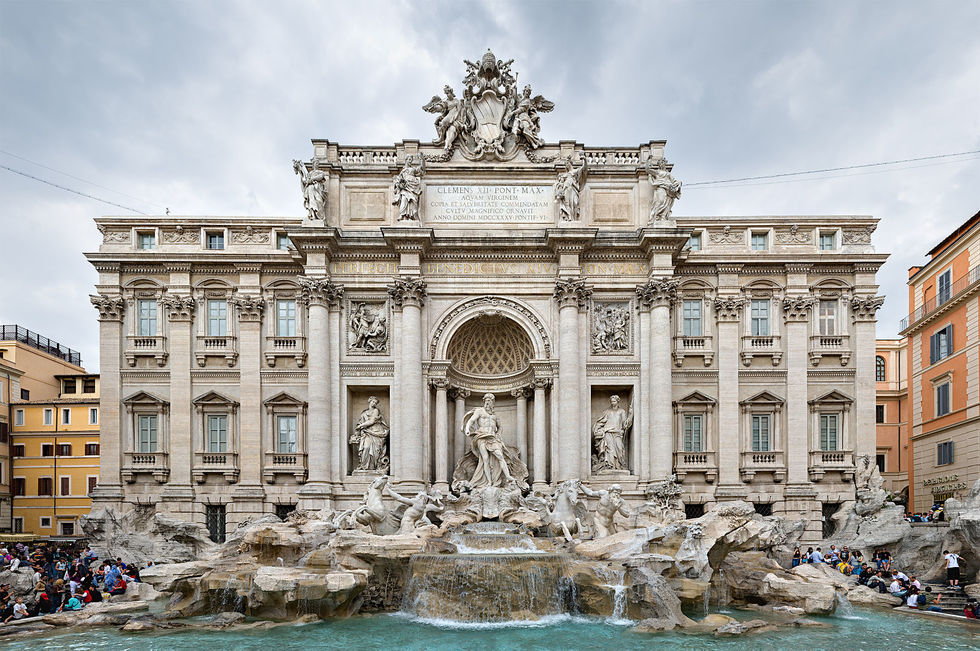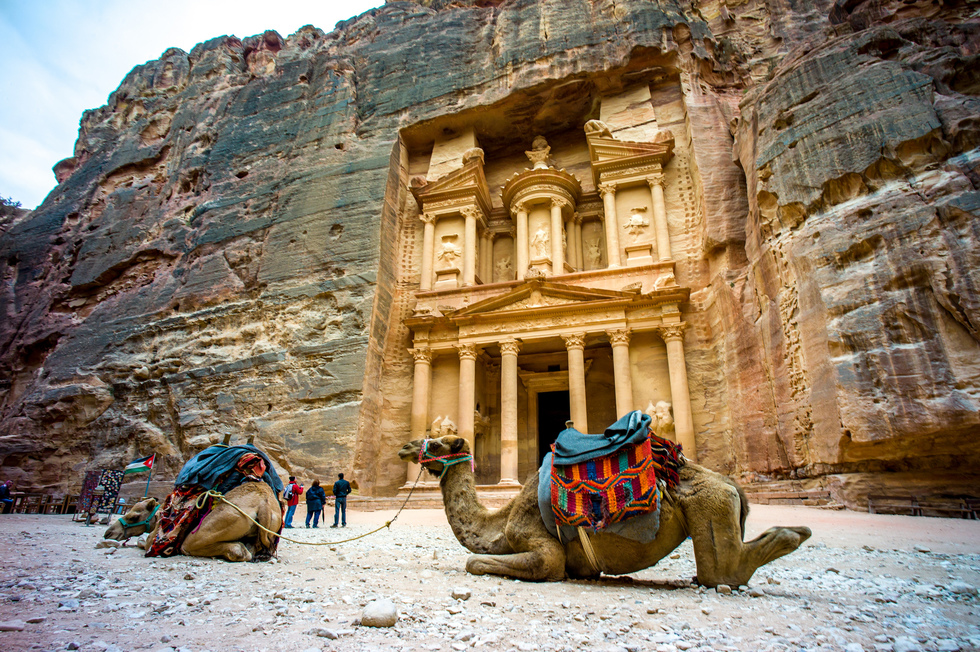That Wasn't a Set: Classic Movie Locations Around the World
ByEven the most realistic movies rely on some amount of illusion to achieve their intended effect. After scouting locations for more than 15 years on projects including Downton Abbey, Lawrence has learned that a large part of the location manager's job is bridging the gap between fantasy and reality. For a period film chronicling important events in history, accuracy was paramount. "We wanted to embed it in the look and the feel of the period as much as possible and really give you a sense of what London was like at that time," says Gavron.
"We sort of act as that liaison between the real world and what the film crew are trying to create," Gavron says. Usually, that means finding look-alike locations to double as the places the film is trying to depict. As Lawrence explains, "You just need detective skills to just try and find that one thing that nobody else has thought of or nobody else has filmed." In this case, they found it: Parliament was willing to open its doors to film Suffragette's climactic protest scene with Anne-Marie Duff (center left) and Carey Mulligan (center right).
Booking the perfect location comes down to being in the right place at the right time. In this case, the Suffragette team got lucky—the Houses of Parliament had been considering allowing film shoots into the building for a while. "Serendipitously, we were lucky they were just considering opening their doors to commercial filmmaking," said Sarah Gavron. "To their credit, they took us on as their first project." Suffragette's historical relevance proved to be a big selling point for MPs who wanted the House to honor its British roots, explaining that "they loved that it was relevant to British history and British politics."
Even with a yes, filming at a building that's both a landmark and a functioning seat of government can lead to scheduling problems. The shoot was scheduled for a week when Parliament was not sitting. Lawrence says, "If something catastrophic had happened, then Parliament would have been recalled, and we wouldn't have been able to book the location."
Filmmakers have enough constraints on set to begin with, let alone the additional rules and regulations put in place by protected locations. Because the Palace of Westminster is a UNESCO World Heritage Site, the crew had to take additional precautions in order to prevent damage to any part of the building. "We went in there with truckloads of floor protection, and we protected the bannisters," says Lawrence. The team also had a conservationist on hand at all times. Gavron emphasized that respect was key, joking that the crew "walked around on eggshells" during the shoot.
Lawrence says shooting at a precious location was also a learning experience for the crew, who realized that "we didn’t necessarily have the freedom to do whatever we wanted."
During the Golden Age of Classical Hollywood cinema, big-budget pictures were primarily made within a studio that oversaw all aspects of production from first take to final cut. In 1952, it was uncommon for a film unit to travel internationally, let alone to shoot on location when a studio set was readily available for less money. Despite Paramount's offer to build sets for Roman Holiday, director William Wyler insisted on filming entirely on location in Italy, arguing that an artificial set wouldn't do Rome's magnificent architecture justice. Thanks to Wyler's wanderlust, Roman Holiday became the first Hollywood movie filmed and processed entirely in Italy—and has since inspired generations of visits from tourists around the world.
The romantic comedy follows Gregory Peck and then-rising star Audrey Hepburn as they tour Rome's most iconic landmarks, including the Spanish Steps and the Colosseum. In a sedated stupor, Hepburn's character Princess Ann insists that she lives in the Roman amphiteatre when she first meets Joe Bradley (Peck).
With source material that prominently features the Musée du Louvre as its setting, Ron Howard couldn't very well film The Da Vinci Code (2006) in a studio. Based on the bestselling novel by Dan Brown, the thriller begins with a murder in Paris' iconic museum and goes on to tour the museum's works and the symbolic meanings behind them (some factual, some liberally interpreted). Although smaller French productions had used the space in the past, The Da Vinci Code was the first major Hollywood blockbuster to be granted permission—of course, not without limits. Because the tourist attraction would lose too much revenue if it closed during the day, filming was only allowed to take place overnight. Also, because its aged paint cannot the strength of movie lighting, the Mona Lisa shown is a replica.
The blockbuster production was met with some opposition from people who found its fictionalization of Paris' greatest cultural institution inappropriate, but then-museum director Henri Loyrette saw no problem with the tourism revenue it would bring. The novel alone brought 7.5 million visitors to the museum in 2005. Today, visitors can take a Da Vinci Code tour of the museum to cook up some Biblical conspiracy theories of their own.
An offshoot of the crime film genre, heist movies focus on the planning and execution of a theft, often of a precious artifact or rare item. Jules Dassin helped originate the genre in 1964 with his comedy variation Topkapi, in which a motley band of thieves plot to steal the dagger of Sultan Muhamud I from Istanbul's centuries-old Topkapi Palace. Criminal subject matter notwithstanding, the filmmakers faced their own set of legal obstacles by featuring what is now a UNESCO World Heritage Site as the setting of their story, and many shots of the film were actually filmed on the roof of the structure, which overlooks the Bosphorous.
Today, visitors can get a look at the actual dagger along with Topkapi's many other treasures, so long as they keep their hands to themselves.
While we were all waiting for our Hogwarts letters, the Harry Potter film crew had its heart set on Oxford. Hogwarts' magical Great Hall was inspired by the equally imposing dining hall at Oxford's Christ's Church College, although the room that ultimately appears in most of the movies was a set on Warner Bros.'s London-area lot (which you can visit). There is no single Hogwarts out there (apart from the one that lives in our hearts), but rather a composite of many locations throughout the UK.
Oxford does, however, make a few appearances in the franchise's early installments. In ...The Sorcerer's Stone, Harry, Ron, and Hermione are first welcomed to Hogwarts by professor McGonagall at the top of a stone staircase that's located at Christ's Church College; later on in ...The Chamber of Secrets, Harry encounters Tom Riddle at the bottom. Oxford's Divinity School also serves as the Hogwarts infirmary, where Harry paid frequent visits.
So widespread is the desire to dine as wizards do that Warner Bros. UK organized a Christmas dinner on the set of the studio's Great Hall—it sold out nearly instantly.
When it comes to action blockbusters, bigger is always better. In his sequel Transformers II: Revenge of the Fallen, director Michael Bay takes the Transformers world to new heights with a robot battle finale extravaganza that takes place atop Cairo's Pyramids of Giza. According to Bay, his studio advised against shooting in Egypt because of safety concerns and expectations of bureaucratic pushback. As he told USA Today, "They always try to discourage an American crew from going to a Muslim country," a policy he chose ignore, unwilling to settle for anything less than the Great Pyramids themselves.
Despite making it past their fair share of government red tape, the crew was surrounded by police upon arrival, which proved to be a final straw for some crew members. But after obtaining the approval of Minister of Antiquities Dr. Zahi Hawass, they were finally able to get the shot—giant robots were added later.
To say Cambodia's had a rough few years would be a gross underestimate: Since the mid-20th Century, the country has been bombed by the U.S., terrorized by the Khmer Rouge, occupied by Vietnam, and ravaged by civil war and countless hidden land mines. Until the 1990s, visiting Cambodia was almost unthinkable, and filming would have been impossible. Lara Croft was the first fictional character to pay a visit to Cambodia since Peter O'Toole's Lord Jim sailed through in 1965.
The titular tomb of Tomb Raider (2001) is located in the Angkor Wat temple complex, a UNESCO World Heritage Site and the largest religious monument in the world. After years with next to no film industry, Cambodia had little in the way of film equipment, and Tomb Raider's transport crew had to drive almost 30 trucks full of equipment over a dangerous road guided by the Royal Cambodian Army.
Conservationists from Cambodia's Apsara temples authority worked closely with Paramount Pictures to ensure filming didn't damage the site or tarnish Cambodia's image, but conservationist Ashley Thompson told the Guardian it felt wrong to demand control of what was filmed. "Coming out of years of oppressive regimes, it seemed that censorship should not be something that we supported. Cambodia should be open, and violent films should be allowed, even if we don't like them."
The scene is shockingly graphic—Keaton's character, who is ill with cancer, is shown bleeding from the mouth, and then she passes out cold on the pavement and has to be revived in the Disney infirmary. Why would Disney permit the only movie scene shot there to be such an un-magical near-death experience? Because Harvey Weinstein, the chief of Miramax, personally begged then-Disney CEO Michael Eisner for the privilege, and because Disney had recently purchased Miramax, Eisner wanted to show good faith. Unsurprisingly, no movie film unit has been allowed in ever since.
Because Petra is unquestionably one of the finest antiquities of the Middle East, if not the world, the film unit was not permitted to shoot inside—it used a sound stage—and it was only allowed to puff some powder out the Treasury's door to simulate destruction within. Steven Spielberg was able, however, to get some cool shots of his actors riding horses through the chasm (siq) that winds to its front door. In the movie, the siq lieads to the classic shot of the hero riding off into the sunset after a job well done.





